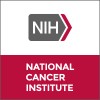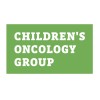
A Study of MBG453 in Combination With Azacitidine and Venetoclax in AML Patients Unfit for Chemotherapy...
Acute Myeloid LeukemiaThis trial will seek to extend the preliminary findings of efficacy of MBG453 in combination with hypomethylating agents (HMA) by evaluating MBG453 in combination with the HMA azacitidine and the Bcl-2 inhibitor venetoclax.

Study to Compare Azacitidine Plus Pevonedistat Versus Azacitidine in Patients With Acute Myeloid...
LeukemiaMyeloid1 moreRandomized phase III, multicentre, open label clinical trial to compare pevonedistat in combination with azacytidine versus azacytidine alone, which can be considered a standard of care for patients with newly diagnosed acute myeloid leukemia not eligible for intensive chemotherapy (thus not eligible for an allogeneic hematopoietic stem cell transplant.

Bortezomib and Sorafenib Tosylate in Treating Patients With Newly Diagnosed Acute Myeloid Leukemia...
Acute Myeloid LeukemiaLeukemia Cutis2 moreThis randomized phase III trial studies how well bortezomib and sorafenib tosylate work in treating patients with newly diagnosed acute myeloid leukemia. Bortezomib and sorafenib tosylate may stop the growth of cancer cells by blocking some of the enzymes needed for cell growth. Drugs used in chemotherapy work in different ways to stop the growth of cancer cells, either by killing the cells or by stopping them from dividing. Giving bortezomib and sorafenib tosylate together with combination chemotherapy may be an effective treatment for acute myeloid leukemia.

Risk-Adapted Chemotherapy in Treating Younger Patients With Newly Diagnosed Standard-Risk Acute...
Acute Lymphoblastic LeukemiaAdult B Lymphoblastic Lymphoma8 moreThis partially randomized phase III trial studies the side effects of different combinations of risk-adapted chemotherapy regimens and how well they work in treating younger patients with newly diagnosed standard-risk acute lymphoblastic leukemia or B-lineage lymphoblastic lymphoma that is found only in the tissue or organ where it began (localized). Drugs used in chemotherapy work in different ways to stop the growth of cancer cells, either by killing the cells, by stopping them from dividing, or by stopping them from spreading. Giving more than one drug (combination chemotherapy), giving the drugs in different doses, and giving the drugs in different combinations may kill more cancer cells.

Lenalidomide and Vaccine Therapy in Treating Patients With Early-Stage Asymptomatic Chronic Lymphocytic...
Ann Arbor Stage I Small Lymphocytic LymphomaAnn Arbor Stage II Small Lymphocytic Lymphoma7 moreThis phase II trial studies the effect of lenalidomide and vaccine in treating patients with early-stage asymptomatic chronic lymphocytic leukemia or small lymphocytic lymphoma. Lenalidomide may stop the growth of cancer cells by blocking blood flow to the cancer. It may also stimulate the immune system in different ways and stop cancer cells from growing. Vaccines may help the body build an effective immune response to kill cancer cells. Giving lenalidomide together with vaccine therapy may make a stronger immune response and kill more cancer cells.

Multi-virus CTLs Expressing CD19 Chimeric Receptors, CD19 Positive Malignancies Post SCT, MULTIPRAT...
Acute Lymphoblastic Leukemia (ALL)Chronic Lymphocytic Leukemia (CLL)1 moreSubjects are having a bone marrow or SCT for either a type of cancer of the blood called Leukemia or a cancer of the lymph nodes called non- Hodgkin's Lymphoma. Although a transplant can cure leukemia or lymphoma, some people will relapse. In those who relapse, current treatment cures only a very small percentage. Although giving patients a dose of donor immune cells before relapse can prevent relapse of the leukemia or lymphoma, DLI can also cause a serious complication called graft versus host disease (GVHD). This is a gene transfer research study using special immune cells which are specific for these cancer cells. The body has different ways of fighting infection and disease. This study combines 2 of those ways, antibodies and T cells. T cells (CTLs or cytotoxic T cells) are infection-fighting blood cells that can kill cells, including tumor cells. Antibodies and T cells have been used to treat patients with cancers; they have shown promise, but haven't been strong enough to cure most patients. The antibody used in this study is called anti-CD19. This antibody sticks to leukemia cells because of a substance on the outside of these cells called CD19. For this study, the anti-CD19 antibody has been changed so that instead of floating free in the blood it is now joined to T cells. When an antibody is joined to a T cell in this way it's called a chimeric receptor. In the laboratory, investigators found that T cells that are trained to recognize common viruses can stay in the blood stream for many years. By joining the anti-CD19 antibody to CTLs that recognize viruses, they believe that they will also be able to make a cell that can last a long time in the body, provide protection from viruses, and recognize and kill leukemia. The CTLs which we will join the anti-CD19 antibody to attack 3 viruses (trivirus-specific CTLs), CMV, EBV, and adenovirus. Studies have shown that trivirus-specific CTLs grown from the stem cell donor can be given safely to transplant recipients and can stop these viruses from causing severe infections. These CD19 chimeric receptor trivirus specific T cells are an investigational product not approved by the FDA. The purpose of this study is to find the biggest dose of chimeric T cells that is safe, to assess the side effects, to see how long the T cells last and to evaluate whether this therapy might help prevent infections and relapse in people with CD19+ leukemia or lymphoma having a SCT.

Precursor B Cell Acute Lymphoblastic Leukemia (B-ALL) Treated With Autologous T Cells Genetically...
LeukemiaAcute Lymphoblastic LeukemiaThis study is an investigational approach that uses immune cells, called "T cells", to kill leukemia. These T cells are removed from blood, modified in a laboratory, and then put back in the body. T cells fight infections and can also kill cancer cells in some cases. However, right now T cells are unable to kill the cancer cells. For this reason we will put one gene into the T cells that allows them to recognize and kill the leukemia cells. This gene will be put in the T cells by a weakened virus. The gene will produce proteins in the T cells that help the T cells recognize the leukemia cells and possibly kill them. The doctors have found that T cells modified in this way can cure an ALL-like cancer in mice. The main goals of this study is to determine the safety and appropriate dose of these modified T cells in patients with ALL. This will be done in a "clinical trial." The dose of modified T-cells will depend on if you have disease present in your bone marrow or not. The patient will also receive chemotherapy before the T cells. We will use normally chemotherapy that is used in patients with leukemia. The chemotherapy is given to reduce leukemia and to allow the T cells to live longer.

Combination Chemotherapy in Treating Young Patients With Newly Diagnosed T-Cell Acute Lymphoblastic...
T Acute Lymphoblastic LeukemiaT Lymphoblastic LymphomaThis randomized phase III trial is studying different combination chemotherapy regimens and their side effects and comparing how well they work in treating young patients with newly diagnosed T-cell acute lymphoblastic leukemia or T-cell lymphoblastic lymphoma. Drugs used in chemotherapy work in different ways to stop the growth of cancer cells, either by killing the cells or by stopping them from dividing. Giving more than one drug (combination chemotherapy) may kill more cancer cells. It is not yet known which combination chemotherapy regimen is more effective in treating T-cell acute lymphoblastic leukemia or T-cell lymphoblastic lymphoma. After a common induction therapy, patients were risk assigned and eligible for one or both post-induction randomizations: Escalating dose Methotrexate versus High Dose Methotrexate in Interim Maintenance therapy, No Nelarabine versus Nelarabine in Consolidation therapy. T-ALL patients are risk assigned as Low Risk, Intermediate Risk or High Risk. Low Risk patients are not eligible for the Nelarabine randomization, Patients with CNS disease at diagnosis were assgined to receive High Dose Methotrexate, patients who failed induction therapy were assigned to receive Nelarabine and High Dose Methotrexate. T-LLy patients were all assigned to escalating dose Methotrexate and were risk assigned as Standard Risk, High Risk and induction failures. Standard risk patients did not receive nelarabine, High risk T-LLy patients were randomized to No Nelarabine versus Nelarabine, and Induction failures were assigned to receive Nelarabine.

Stem Cell Transplant for Juvenile Myelomonocytic Leukemia (JMML)
Juvenile Myelomonocytic LeukemiaThe investigators hypothesize that long-term disease-free survival (DFS) in patients with JMML can be achieved with a treatment of busulfan (BU), cyclophosphamide (CY) and melphalan (L-PAM) followed by hematopoietic cell transplantation (HCT).

A Study in Adults With Untreated Acute Lymphoblastic Leukemia
Acute Lymphoblastic LeukemiaThe purpose of this study is to determine the safety and optimal dosing of L-asparaginase in adult patients with acute lymphoblastic leukemia (ALL) between the ages of 18 and 50 years.
